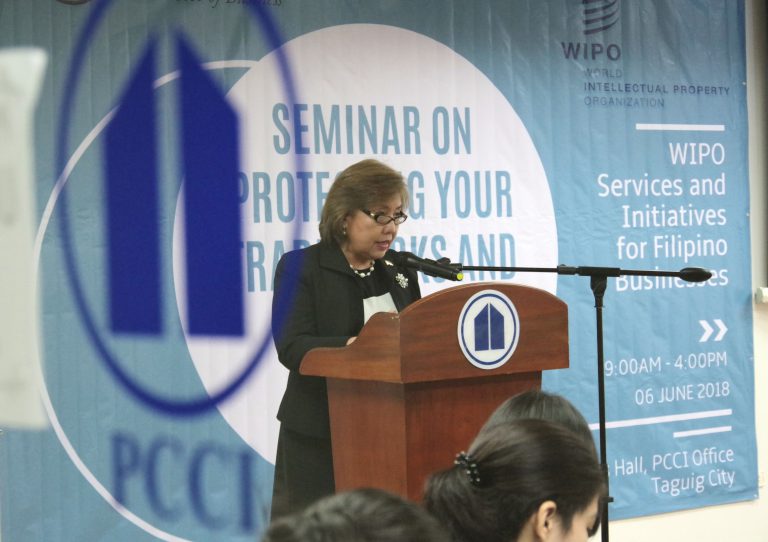
How to protect your intellectual property on Facebook
November 15, 2021
When the COVID-19 pandemic put the world on a standstill, social media channels have served as a saving grace for entrepreneurs and content creators to survive. But as much as it enabled legitimate users to market and sell their products, social media platforms widened opportunities for counterfeiters and online pirates.
At the Intellectual Property Office of the Philippines (IPOPHL), counterfeiting and piracy complaints from intellectual property (IP) rights holders and reports from the concerned public surged to a record high of 121 in 2020. This exceeds the 2016 to 2019 total received, with most activities allegedly conducted on top social media platform Facebook.
Seeing the need for IP rights holders to adopt new best practices in the new normal, IPOPHL collaborated with Facebook in July 2021 to educate some 100 IP rights holders regarding Facebook mechanisms on reporting and requesting to take-down violating posts.
Alessandra de Rosa, IP legal counsel of Facebook, explained that the most basic types of reporting method on the platform require only a few clicks and is accessible to all, including concerned netizens.
But for rights holders who have certificates and documents to prove their trademark or copyright ownership, de Rosa encouraged enrolling into Facebook’s specialized protection tools to have greater control and options in managing their IP assets.
Protecting trademarks
For trademark infringement and counterfeit reporting, the Brand Rights Protection Tool was designed and recently updated to allow rights holders to:
- Search for content that misuses their IP through the text or title of ads posted on Instagram accounts, Facebook accounts, the Facebook marketplace and group sales posts;
- Upload and save up to 10 images to their account, such as logos or product images, for Facebook’s image matching technology to automatically detect potentially infringing content;
- Save information needed by Facebook’s IP operations (i.e contact details, trademark registration number) in validating a report; and
- Send Facebook a takedown request to remove infringing content and track the status of requests through a dashboard.
When searching for ads and commerce listings using keywords, IP rights holders can begin with searching for their brand names, then refine their search with a few techniques:
- Adding keywords like “offer” or “sale”
- Including a product name
- Using different spellings or synonyms

Image search sample by Facebook.
For image searches, rights holders are encouraged to upload full-sized, high-quality images that show the product clearly on a simple background, otherwise searches may not yield relevant results.
Facebook also recommends infringing images to be saved from the news feed as this would be higher-quality than screenshots, therefore produce more accurate results.
Protecting copyrighted works
If rights holders don’t manage a large online content production, reporting individual infringements through Facebook’s IP reporting form may be more viable.
For creators and publishers with large content portfolios, however, the Rights Manager Tool will work best to protect their works on Facebook and Instagram at scale.
Creators or page administrators can upload their audio recordings, photos and audio-visual works to the Rights Manager as reference. Once they find a match to their works, there are five things they can do about the infringing content:
- Claim ad earnings. Authors can demand a share from the revenues earned by the ad.
- Block. This will make a post undiscoverable, preventing users from viewing it.
- Further monitor. Keep an eye on how they are performing in terms of views, reactions and shares.
- Manual review. Owners are given 30 days to decide what action to take.
- Allow the content to be published for free.
Content creators can pre-set these rules for automated action once a match is found.
Content that matches copyrighted work is generated either manually through content creators’ search efforts or through Facebook’s proactive monitoring.
Other take-down requests
For requesting the deactivation of entire profiles, pages or Instagram accounts, rights holders are encouraged to provide three to four examples of specific infringing content within each profile.
De Rosa said they can also stop live videos –– a popular mode of selling on the platform –– in the middle of streaming if Facebook’s IP operations team can immediately validate a report from rights holders.
Reporting best practices
Trust and Safety Manager at Facebook’s IP Operations, Christopher Lorenzo told rights holders to ensure sufficient and accurate reporting to eliminate additional steps for verification. For example, if only a portion of the video or audio was infringed, the location of the portion must be specified when reporting.
“If your report is complete and valid… the report is removed 24 hours, or even less, or even in minutes,” Lorenzo said.
He encouraged filing of appeals at the earliest point of detection so Facebook can look at it “at the soonest possible time.”
He also discouraged resubmitting complaints which may load up the team with redundant tasks.
For copyrighted works, Lorenzo admitted that this is “more challenging to verify.” As such, rights holders must fully describe their copyrighted content and provide all possible related documentation.
For its part, IPOPHL recommends rights holders to first direct the takedown request to the infringer as this could be the fastest and most amenable way.
IPOPHL also recommends rights holders to tap a collective management organizations (CMOs), which provides one-stop-shop services for the legal, business and enforcement needs of creators.
IPOPHL advises content creators to reach out only to CMOs accredited by the agency to ensure their legitimacy and competence to protect members’ IP rights.
At present, there are five accredited agencies: the Performers Rights Society of the Philippines, Inc. (PRSP); Filipino Society of Composers, Authors and Publishers, Inc. (FILSCAP); Filipinas Copyright Licensing Society, Inc. (FILCOLS); Philippines Recorded Music Rights Inc. (PRM); Independent Music Producers of the Philippines (IMPRO).
DISCLAIMER: The information above are for general informational purposes only and are not intended to serve as legal advice.







